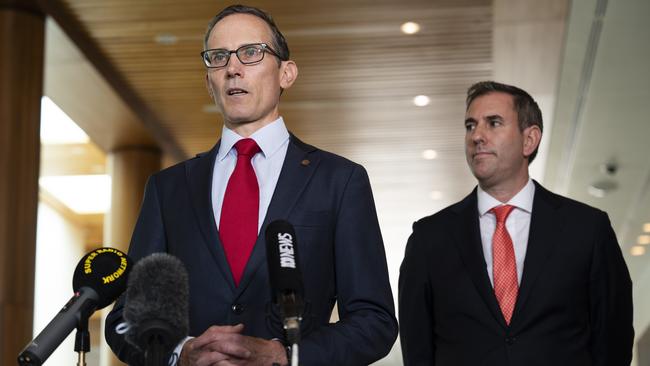
The proposals involve a major shift of power to the Australian Competition and Consumer Commission which is at last being granted its wish to be able to cast its eye over – and potentially delay – more than 1000 deals a year.
Instead of most takeover and merger deals in the economy going through smoothly, with only the most potentially damaging to competition being reviewed by the ACCC, would-be buyers will soon have to go cap in hand to the ACCC for approval, deal by deal.
They will have to be ready to stump up fees of $50,000 to $100,000 to get their deals reviewed and face unspecified new penalties if they flout the new laws.
While the ACCC, in theory, will be under pressure to process the applications within 30 days, it will be open to the commission to find reasons to extend the review process.
The proposed changes will mean that takeovers and acquisitions and associated deals will not be able to go ahead without specific clearance from the ACCC or the Australian Competition Tribunal, which will be the review body for appeals against ACCC decisions.
It is not out of the question that a large percentage of normal business transactions in Australia today could beheld up in the ACCC review process for weeks and months at a time.
While Chalmers says deals deemed to be “pro-competitive” could potentially go through the ACCC more quickly, whether a deal is “pro-competitive” or not will be in the eyes of the newly empowered regulatory beholder.
But just how does the ACCC work that out? How many mergers or deals are “pro-competitive” at first sight?
What exactly is a “pro-competitive deal”?
The person who holds the hammer can easily see many things as a nail.
At the moment the ACCC complains that it only sees some 300 mergers a year – about a quarter of the 1400-odd deals in Australia, which are valued at around $300bn.
So does this mean it will now be able to review four times as many deals a year in future, holding up many more deals until they run the gamut of its strengthened review process?
The radical shift in the review process, with the ACCC’s significantly increased powers, will slow down the merger and deal-making process in corporate Australia when it comes into force in 2026.
It effectively introduces a Foreign Investment Review Board-style mandatory approval process for domestic deals.
Hopefully the ACCC will be adequately staffed to process the significant increase in its workload.
While the new regime could head off deals seen to substantially lessen competition in the country (which the ACCC already has the power to do), it will inevitably block or slow down deals that would have produced a more efficient outcome.
By slowing down deals that could create companies or organisations with greater economies of scale, it will make Australia less competitive, not more, and less productive, not more, with prices charged to consumers potentially more expensive, not less.
Any deal between two companies in the same sector – say a trucking company in Victoria and another in Queensland – will reduce competition in some way.
But the economics of mergers and industry rationalisation can be significant in a country with a large land mass and a small population like Australia.
Woolworth and Coles are going to have more buying power and more bargaining power with suppliers than the corner store – resulting in lower prices for consumers.
In his speech, to be delivered on Wednesday, Chalmers will warn that “some mergers can cause serious economic harm”.
“This happens when players are not interested in improving profitability by lifting productivity, when they’re solely focused on squeezing out competitors to capture a larger percentage of the market.”
While this sounds laudable, is he asking the ACCC to pass judgment on the intent of executives in a merger deal? How would ACCC officials know what the long-term intent of the merger partners would be or the business decisions of the executives involved?
They can only pass judgment on the facts and the likely outcome – not allowing a deal which would give the combined group inordinate market power or which would “substantially lessen competition”.
But there is no way the ACCC can judge whether players in a deal may be interested in “improving productivity by lifting productivity” or not.
As Chalmers points out in his speech, the idea of a shake-up of merger laws was initially opposed by the Business Council of Australia.
He points out that the ACCC was pushing for even more power by also changing the burden of proof for deals, forcing those involved to show that their proposals would not substantially lessen competition.
Hence his depiction of his proposals as being a sensible middle ground.
But the use of high-minded words like “streamlining appeal systems” and “transparency” does not hide how potentially radical the new system could be.
We have no idea the threshold for the deals involved. How small will a deal have to be before it does not have to be notified to the ACCC?
The devil will be in the detail – much of which is still to come.
Chalmers’ comments that small businesses will not have to pay the same large fees as large businesses implies that the new regime could also apply to mergers between two small companies.
While Chalmers argues that other OECD countries have mandatory approval processes by competition regulators, we have no way of knowing at the moment just how broad the application of the new regime will be in Australia, let alone how it will compare with other developed economies. The changes will be a boon for lawyers and advisers who will now have a lucrative new business in making applications to the ACCC.
But even some experienced M&A lawyers have been sceptical about the need for such a radical change.
Writing in an opinion piece for The Australian, prepared before the details were announced, the Australia-based antitrust partner of global law firm White & Case, Stefanie Benson, argued that “it has simply not been shown that the ACCC’s toolkit is inadequate or that new laws would address any existing deficit or make any meaningful improvement to productivity. Introducing new regulation is not costless. While there may be limited sympathy for corporations burdened by additional regulatory approval, there are invisible costs such as the loss of efficiency-producing transactions which are either abandoned or never contemplated for fear or a protracted, uncertain and expensive review. The risk of deterring investments that may be crucial to technological and energy-related transformations must be considered in the government’s cost/benefit analysis of the proposed reforms.”
Big Brother rules
Chalmers’ announcement of the most radical shake-up of Australia’s laws around mergers in 50 years represents another significant expansion of the role of government in the economy under the Albanese government.
In its latest survey of sentiment, the Australian Institute of Company Directors reports that directors are being worn down by successive waves of new regulations and compliance measures.
It reports increasing distrust of the federal government.
It argues that the need to focus on a slew of new regulations and compliance measures is deterring directors from taking risks and making new investments.
Chalmers talks often about the need to improve Australia’s productivity and competitiveness but there is now an increasing divergence of views between government and business in how to go about it.




Federal Treasurer Jim Chalmers’ proposal for a major shake-up of Australia’s takeover laws has the potential to provide a major barrier for any significant rationalisation of the Australian economy.